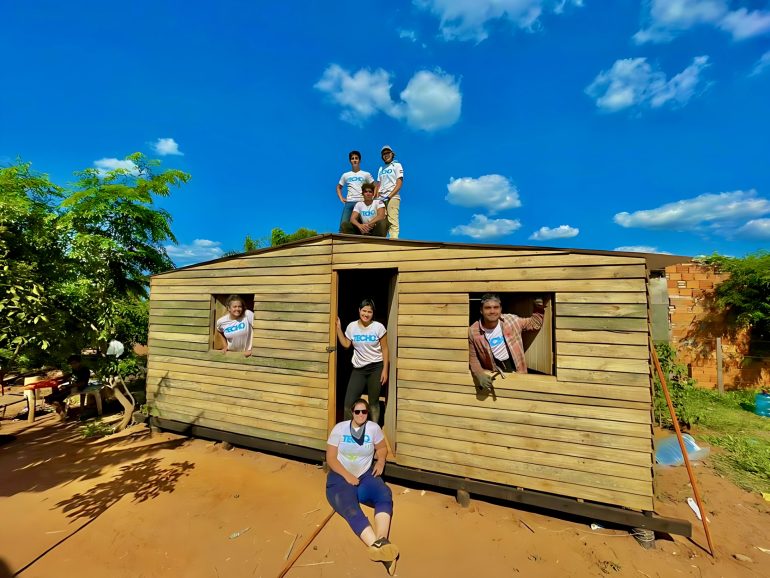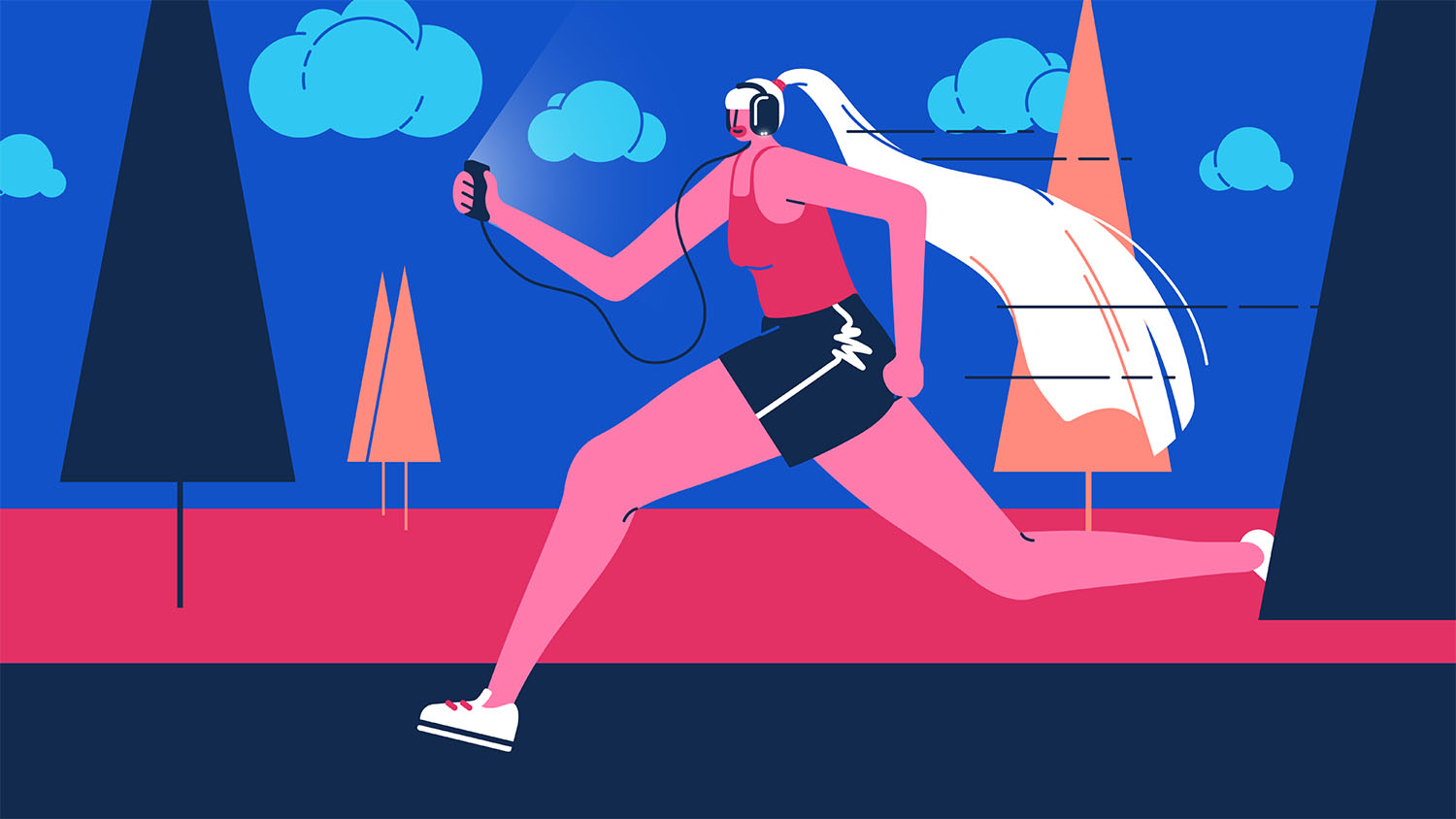Since 2008, Techo Paraguay has worked to reduce housing inequality by building emergency homes, and promoting community development. The non-governmental organisation focuses on low-income settlements where families often lack basic services such as water or sanitation. To date, Techo Paraguay has built over 9,000 emergency homes and operates in Paraguayan key regions such as Asunción, Ciudad del Este, Encarnación, and Concepción.
Claudia Neumann (29), the current Executive Director, began as a volunteer at the age of 17 and has since dedicated more than a decade to the cause.
“At first, I simply wanted to help. I never imagined I would end up leading the organisation,” she says. In her words, Techo Paraguay is not only about building homes, but also about transforming the lives of both the families supported and the volunteers who join the cause.
Building and supporting communities
The Techo Paraguay model is based on two main pillars: constructing emergency housing and strengthening community capacities. The organisation’s signature 18m² wooden homes are built in only two days with the help of eight to ten volunteers. Each home is elevated on wooden piles to prevent moisture intrusion and includes zinc roofing, windows, and insulation. These houses provide families with a dry, private, and safer place to live.
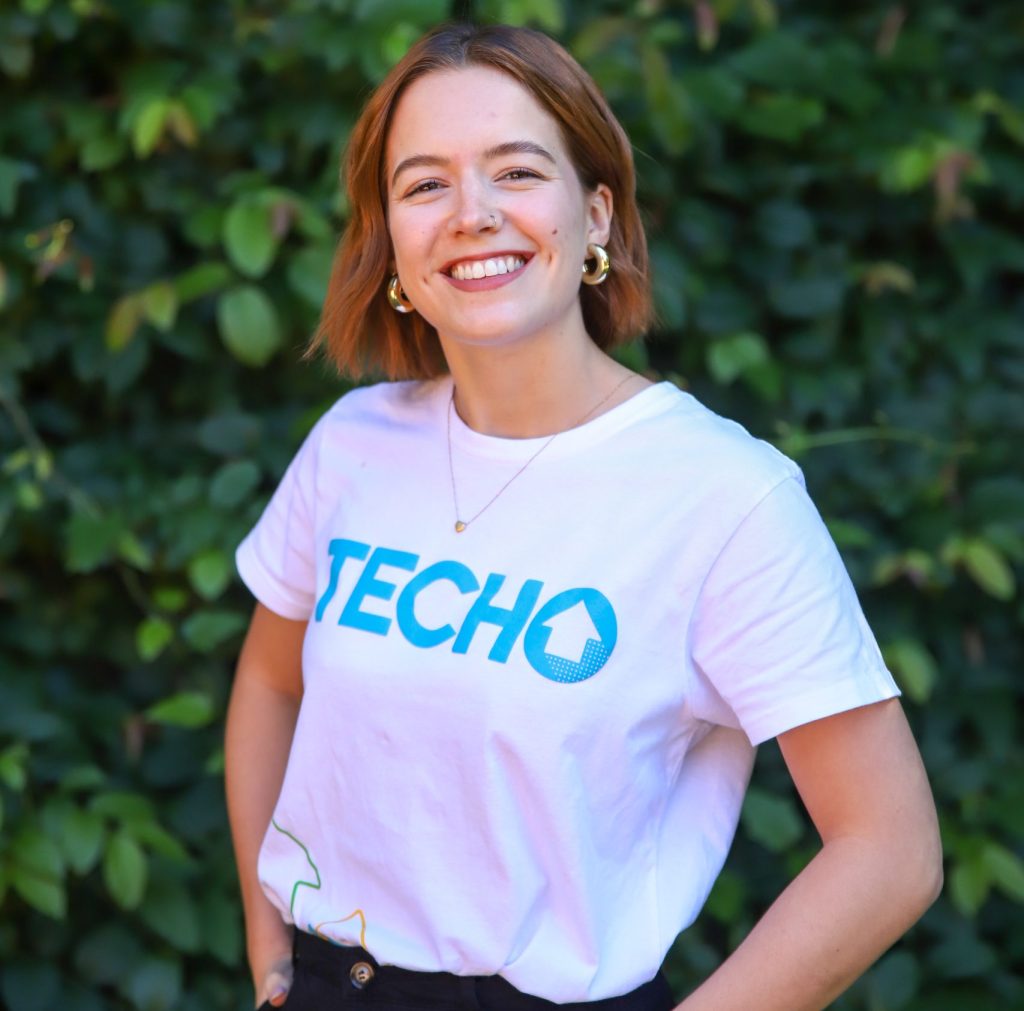
Beyond housing, Techo engages in collaborative projects to improve communal infrastructure such as playgrounds, footpaths, lighting, chapels, and security posts. These initiatives are developed through participatory planning with residents, who identify their own priorities.
“We believe that the real power lies in the community,” Neumann explains. “Therefore, we support projects that they identify, and design themselves.”
Stories that shape the movement
For the Executive Director, her most powerful memory is of her first build as a 17-year-old volunteer. The house she was helping to construct belonged to Ana and her young son Mati, who lived in a fragile structure made from cardboard and plastic bags. “It started raining heavily, and Ana invited us to take shelter in her home,” she recalls. “I was afraid of the storm, but then I felt ashamed, because they had to face that fear every time it rained.”
She had no idea where to begin, as it was her first time holding a hammer. “All I had was a plastic poncho and the determination to finish Ana’s home,” she says. That first construction experience deeply moved her and shaped her path. “What struck me most was the difference in our lives, how people just like us could live in such different realities.”
From one chapel to thousands of homes
The organisation began in Chile in 1997, when a group of Jesuit university students travelled to a rural village to build a chapel. While working alongside the community, they realised that the most urgent need was housing. This experience led them to construct a set of homes with local families, sparking a movement now present in 18 Latin American and Caribbean countries. Paraguay joined the network in 2008.
In 2012, the name changed from “Un Techo para mi País” (A Roof for My Country) to simply “Techo” (Roof), unifying the brand and mission across borders. Despite national differences, the core values, solidarity, dignity, and youth empowerment, remain the same. As Claudia puts it, “We are not just building homes, we are building a more equal Latin America and the Caribbean.”
Becoming part of the mission
For those wishing to become involved, the NGO offers flexible volunteer programmes, ranging from one-off construction weekends to long-term leadership positions. “It is not about being a professional builder,” the young leader explains. “It is about showing up with empathy, energy, and the belief that change is possible.”
Volunteers can also participate in research, logistics, or community workshops, all of which are essential to sustaining the movement. Regardless of the role, what unites them is the conviction that everyone deserves a dignified place to live.
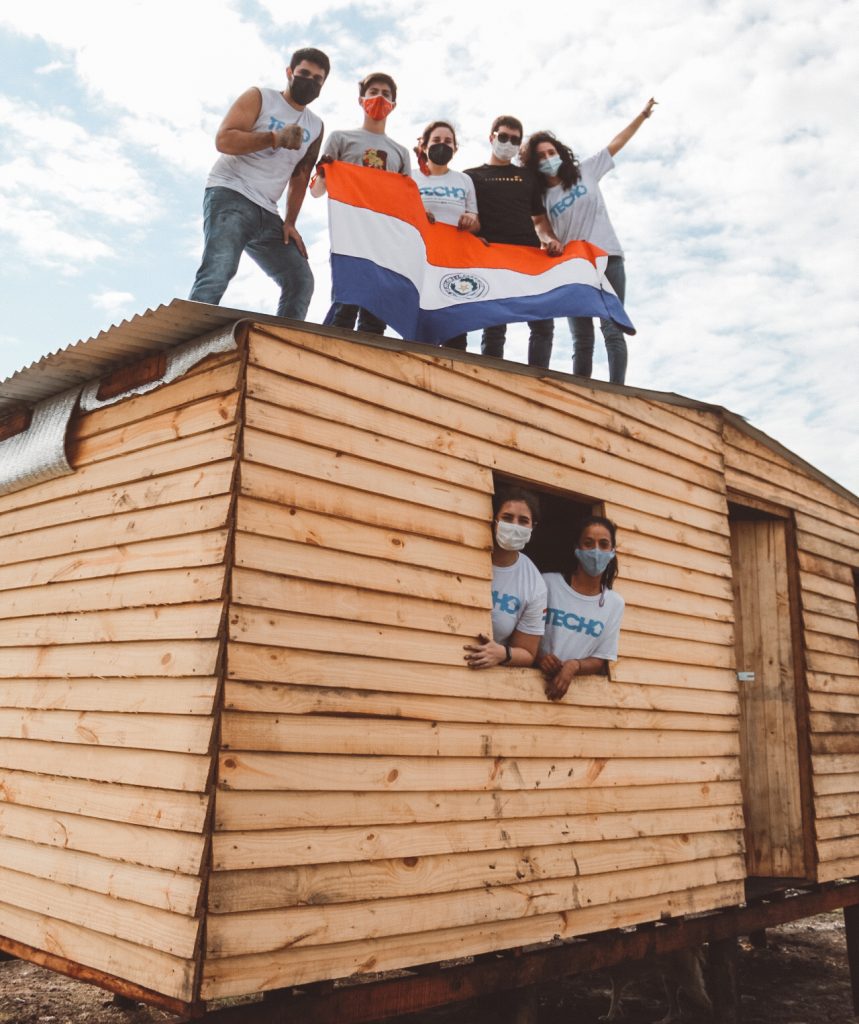
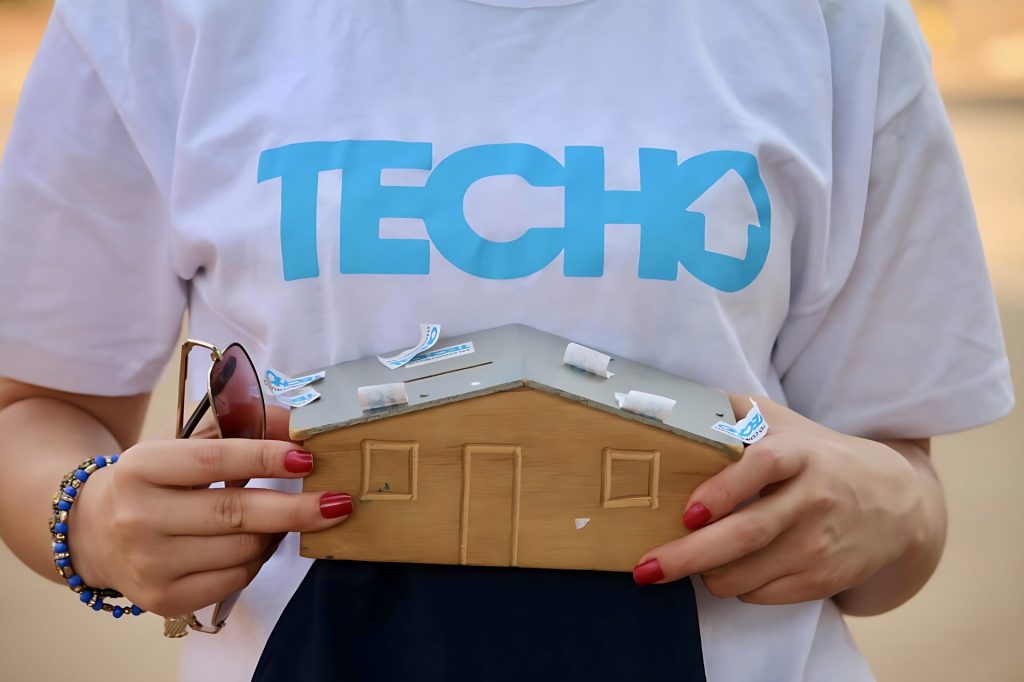
The road head for Techo Paraguay
In 2025, Techo aims to build 500 emergency homes and implement at least 22 community infrastructure projects. With operations reactivated in departments such as Caaguazú and Itapúa, expansion is once again underway. Plans are also in place to reach new territories such as San Pedro and Caazapá, depending on funding availability.
By 2030, Techo hopes to contribute to a broader international goal: helping over one million people leave dirt-floor housing behind through the mobilisation of two million volunteers. “Our dream is to no longer be needed,” Neumann says. “That would mean our mission was fulfilled.”
Mobilising youth for change
A key aspect of Techo’s impact lies in its ability to mobilise young people. “We are a youth-led movement. We usually have between 300 and 400 active volunteers involved at once, and this year we are aiming to reach 16,000,” the head of Techo Paraguay explains. Volunteers as young as 15 years old can join with parental consent, and from that age onward there is no upper age limit. Many come from partner schools, and universities across the country.
The initiative offers opportunities beyond weekend construction. Volunteers can take on leadership roles, conduct community assessments, or organise fundraising campaigns. “We aim to form critical, proactive citizens. Some volunteers come for a single weekend and stay for years.”
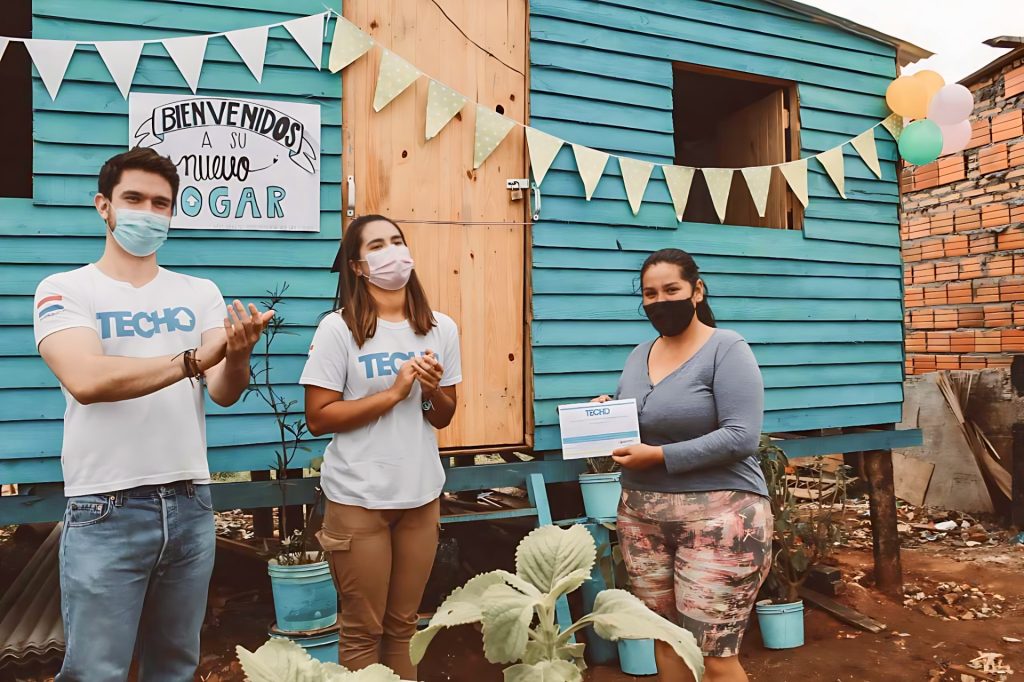
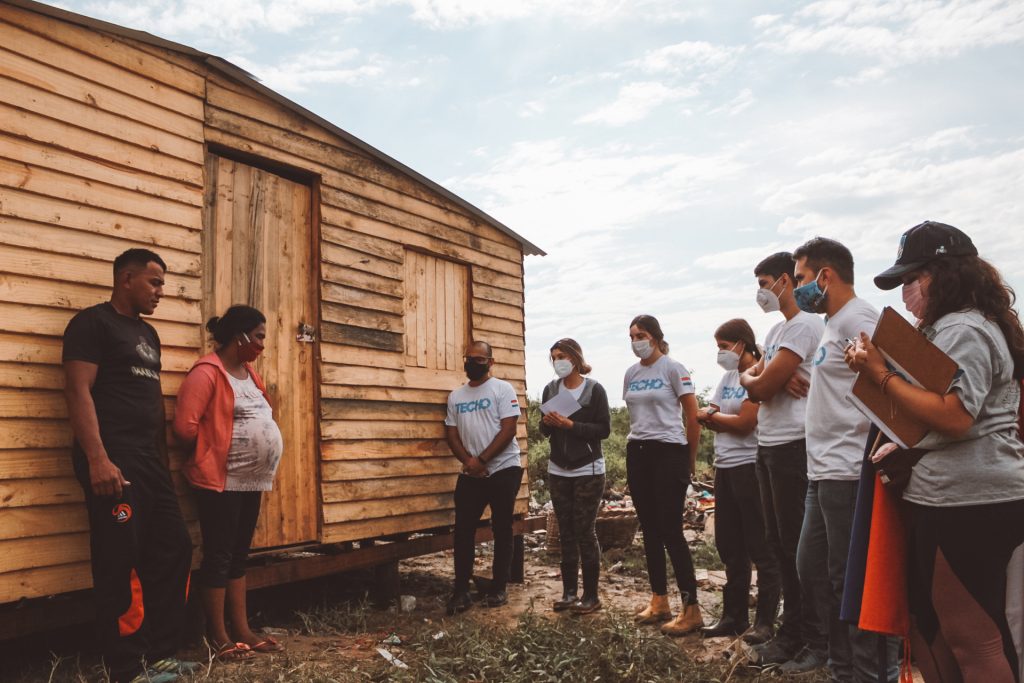
Techo Paraguay’s mission is deeply complemented by broader youth-led solidarity efforts across the country. One notable example is Solidarity Nights, an initiative in which young volunteers venture into the streets of Asunción and surrounding cities whenever temperatures fall below ten degrees Celsius, offering warm food, blankets, and companionship to people sleeping rough.
Such endeavours underscore not only the willingness of young Paraguayans to help their fellow citizens, but also the powerful belief that empathy and action can transform lives, even under the most challenging conditions.
For more information, visit Techo Paraguay’s website, or follow Techo Paraguay on Instagram.

